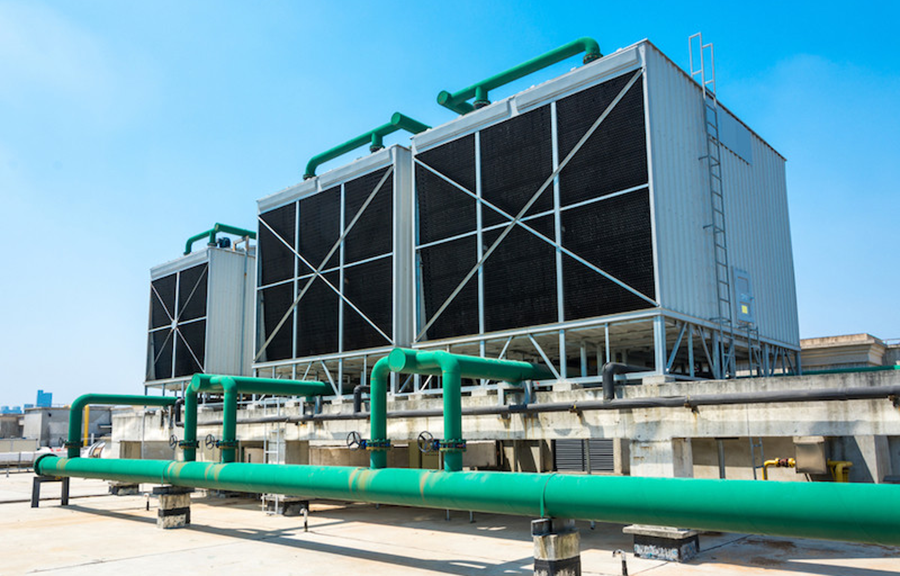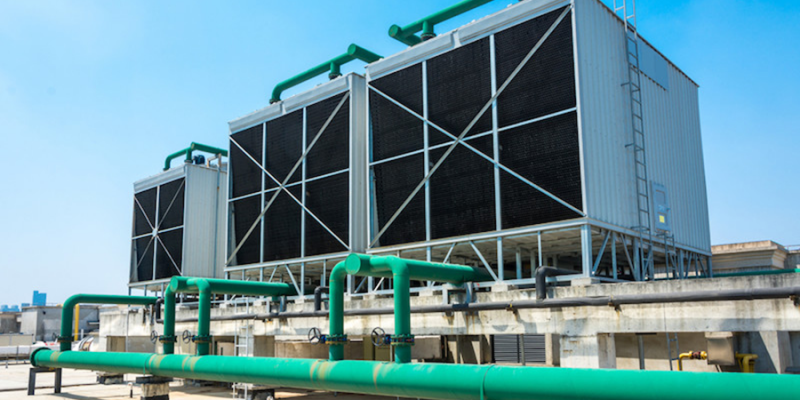
Cooling Tower Inhibitors
Cooling tower inhibitors are chemicals added to the cooling water to inhibit unwelcome chemical reactions such as corrosion and scale.
Using the right inhibitor is crucial to maximizing function, energy consumption and equipment longevity. Different products are available, based on the chemical composition of the makeup water for a cooling tower. Options in the inhibitor arena have changed over the years, so make sure you are not relying on out-of-date information to select the right cooling tower inhibitor for your needs.
Obsolete Protocols
In the old days, chromate and acid were used to control corrosion and scale. This low pH approach had a problem: heavy metals. Chromate is a heavy metal, which includes any metallic chemical elements with a relatively high density which is toxic at low concentrations. Other examples include mercury, cadmium, arsenic, thallium and lead. These are obsolete for obvious reasons: They’re dangerous to the environment and to human health. Remember Erin Brockovich? Hexavalent chromium (also called Chromate VI) was the chemical she successfully fought in California in 1996.
After this period, high pH programs and alternatives were employed. The next generation of chemicals we relied on to prevent scale were Polyol esters and phosphonates. Phosphate and zinc were used to prevent corrosion. Phosphonate compounds AMT (Aminotris or methylenephosphonic acid) and HEDP (1-Hydroxyethylidene-1,1-diphosphonic acid) were effective high pH water treatment chemicals.
The Next Generation
These are still in use, but newer molecules offer greater scale prevention and better organic corrosion inhibition. Also, newer molecules afford better resistance to chlorine breakdown. Some of these new chemicals contain little or no phosphate, which helps them to meet environmental requirements. Today’s treatment chemicals have a variety of characteristics: Some molecules inhibit calcium deposition, some prevent silica scale.
Selecting the right chemical has important consequences – it can save water and chemical use while reducing impact on sewer volume and prolonging equipment life. The choice depends largely on the chemical composition of your local water supply. If you have soft water, corrosion may be your biggest concern. If the water is very hard, scale will be a problem. If your makeup water is high in silica, that must be addressed. Silica scale presents one of the hardest challenges in the world of water treatment.
Any question about whether your chemicals and information are up to date? Please contact your Chemtex representative.
21st Century Water Treatment with Chemtex
Just like everything else, water treatment chemistry has changed over time. 1990 chemistry can’t provide the best protection possible in a 2019 plant. Bring your treatment program up to date for the best results.




/NQA-ISO-9001-Logo-ANAB.jpg)